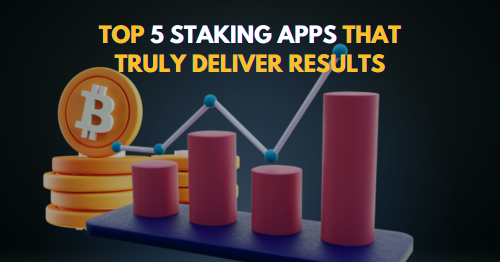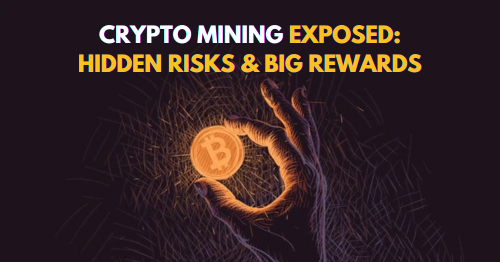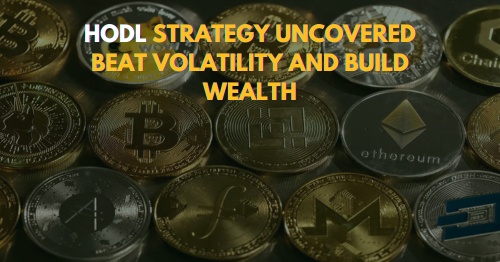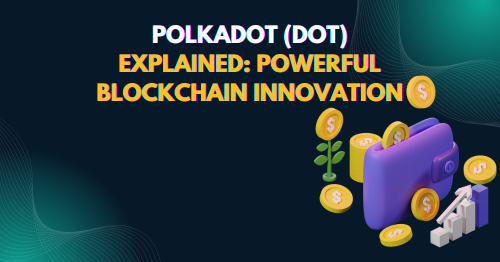
Polkadot (DOT) Explained: Powerful Blockchain Innovation
Polkadot (DOT) Explained: Powerful Blockchain Innovation. In the fast-moving world of cryptocurrency, Polkadot (DOT) has emerged as a transformative force, reshaping how blockchains communicate and scale. This guide takes a deep dive into everything you need to know about this innovative asset, from its core technology to market performance and future outlook.
What is Polkadot (DOT)?
Polkadot (DOT) is a next-generation blockchain protocol that enables multiple blockchains known as “parachains” to operate together on a single network. Developed to solve issues of interoperability, scalability, and security, Polkadot aims to create a decentralized internet of blockchains.
Unlike traditional networks, where blockchains function in isolation, Polkadot (DOT) provides a framework for seamless communication across diverse chains, improving efficiency and fostering innovation. This makes it a critical player in the evolution of Web3.
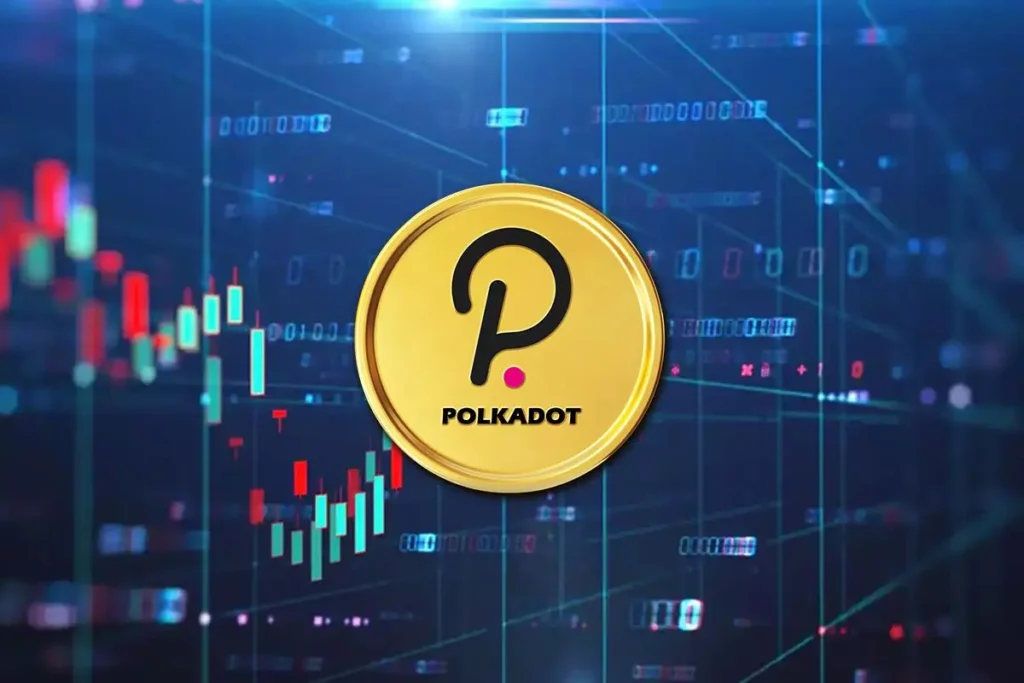
Read All About: Shiba Inu (SHIB), Cardano (ADA), and Dogecoin (DOGE).
Owner and Establishment Year
Polkadot (DOT) was created by Dr. Gavin Wood, a key figure behind Ethereum’s inception, who also served as its former Chief Technology Officer at the Ethereum Foundation. He is also the founder of Parity Technologies and the Web3 Foundation, the organizations responsible for developing and maintaining Polkadot.
The Polkadot whitepaper was released in 2016, and the network officially launched in May 2020. Backed by a robust team and community, its development has followed a highly transparent and research-driven path.
History and Development
The vision for Polkadot (DOT) started in 2016 when Gavin Wood sought to build a more interoperable and scalable blockchain infrastructure than what Ethereum currently offered. After raising over $140 million through an ICO in 2017, the project faced delays due to technical and regulatory hurdles.
However, the team persisted, and by 2020, Polkadot’s mainnet was live. Its architecture introduced groundbreaking concepts like shared security, relay chains, and parachains, which enable the parallel processing of transactions.
Major milestones include:
- Launch of Kusama, Polkadot’s canary network (2019)
- Genesis block of Polkadot Mainnet (2020)
- First parachain auctions (2021)
- Integration with DeFi and NFT platforms (2022 onwards)
Key Features and Underlying Technology
The core architecture of Polkadot (DOT) is designed to be modular and future-proof. Key features include:
1. Relay Chain
Acts as the main network hub, coordinating consensus and cross-chain communication.
2. Parachains
Decentralized networks operating independently yet coordinated via the relay chain, each optimized for unique tasks. Independent blockchains connected to the relay chain, each optimized for specific use cases.
3. Bridges
Allow communication with external networks like Ethereum and Bitcoin, enhancing interoperability.
4. Nominated Proof-of-Stake (NPoS)
A secure and scalable consensus mechanism where nominators back validators to earn rewards.
5. On-Chain Governance
Token holders have the power to vote on protocol upgrades, making the system highly democratic and adaptable.
Thanks to its scalability and cross-chain compatibility, Polkadot (DOT) is increasingly becoming a foundation layer for future decentralized applications (dApps).
Use Cases and Adoption
The versatility of Polkadot (DOT) supports a wide range of real-world applications:
- DeFi Platforms: Projects like Acala use Polkadot to offer decentralized finance services.
- NFTs: Networks such as Unique Network allow creators to mint and trade NFTs with low fees.
- IoT & Data Sharing: Integrates with devices and protocols that require high-speed, secure communication.
- Cross-chain dApps: Developers build apps that interact with multiple blockchains simultaneously.
Adoption is steadily growing, with over 500+ projects in the ecosystem and ongoing collaborations with governments, institutions, and tech companies.
Price Trends and Market Insights
Since its debut, the price of Polkadot (DOT) has experienced several cycles of growth and correction:
- Initial Listing (2020): Traded around $2.90
- Bull Run (May 2021): Peaked above $49
- Bear Market Correction (2022): Dropped below $10
- Stabilization Phase (2023–2025): Consolidating in the $5–$8 range
Market experts view Polkadot (DOT) as a long-term project with strong fundamentals. It consistently ranks within the top 20 cryptocurrencies by market capitalization, often favored by investors for its utility and innovation.
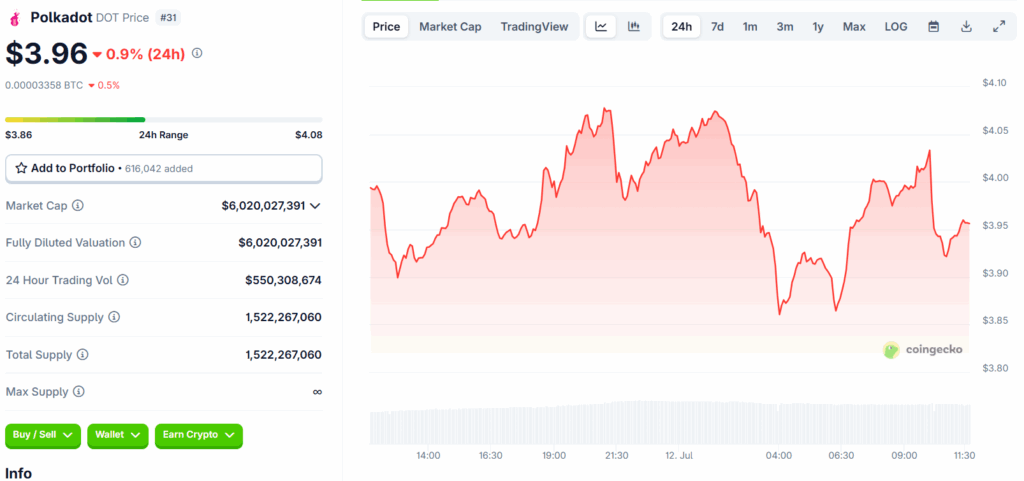
For live market updates, see CoinGecko’s DOT tracker.
How to Buy and Store Polkadot (DOT)
Acquiring Polkadot (DOT) is easy and secure when using the right platforms and storage methods.
Where to Buy:
You can purchase DOT on major exchanges such as:
- Binance
- Coinbase
- Kraken
- KuCoin
Look for pairs like DOT/USDT, DOT/BTC, or DOT/INR depending on your region.
Where to Store:
Once bought, you should store your Polkadot (DOT) securely. Options include:
- Hardware Wallets: Ledger Nano S/X
- Software Wallets: Trust Wallet, Polkadot.js
- Exchange Wallets: Convenient but less secure for long-term holding
Always enable 2FA and use non-custodial wallets for greater control over your assets.
Future Outlook and Predictions
The future of Polkadot (DOT) looks promising, with continuous innovation and community-driven development at its core. Its long-term roadmap emphasizes scalability, decentralization, and interoperability. A key upgrade in progress is Parathreads, which allow blockchains to share limited relay chain resources on a flexible, pay-as-you-go model, ideal for smaller or experimental projects.
Polkadot (DOT) also plans to strengthen its cross-chain bridges, enabling smoother asset and data transfers with external blockchains like Ethereum, Solana, and even legacy financial systems. Additionally, its upcoming Governance 2.0 framework is expected to introduce faster decision-making, improved proposal tracking, and more inclusive community participation.
Institutional interest is also on the rise. Venture capital firms and blockchain-focused funds are actively exploring investments within the Polkadot ecosystem. With growing developer activity and increasing use cases in decentralized finance (DeFi), gaming, and AI integration, Polkadot (DOT) is positioned to remain a foundational infrastructure in the next evolution of the internet, Web3.
As momentum builds, experts project strong mid- to long-term growth for DOT, especially as demand for scalable, interoperable solutions continues to rise in the global blockchain space.
For further reading, check out our guide on Blockchain Revolution
Final Thoughts
Polkadot (DOT) is not just another cryptocurrency, it’s a comprehensive blockchain framework designed to connect and secure the future of Web3. With its powerful tech stack, strong team, and growing ecosystem, it offers both short-term opportunities and long-term value for crypto investors, developers, and researchers alike.
As blockchain continues to evolve, keeping an eye on Polkadot (DOT) might just be one of the smartest moves in your crypto journey.
Frequently Asked Questions
What is Polkadot (DOT) used for?
Polkadot (DOT) is used to facilitate interoperability between blockchains, support smart contract development, and govern the Polkadot network through staking and voting mechanisms.
Is Polkadot (DOT) a good investment?
Many experts consider Polkadot (DOT) a strong long-term investment due to its scalable architecture, active developer community, and expanding ecosystem in DeFi and Web3 applications.
How is Polkadot (DOT) different from Ethereum?
Polkadot (DOT) enables multiple blockchains (parachains) to run in parallel and communicate, whereas Ethereum supports single-chain smart contracts. Polkadot emphasizes scalability and cross-chain interoperability.
I work as a content writer in the blockchain and cryptocurrency domain. I have a keen interest in exploring the world of digital assets, Web3, and emerging crypto technologies. My goal is to provide readers with easy-to-understand, engaging, and trustworthy insights, helping them stay informed and confident in the rapidly evolving world of crypto and blockchain.


